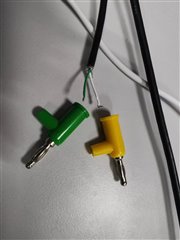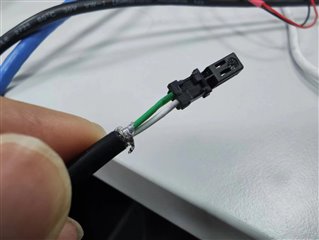I just implement TDR follow below and snla389,but it often show 1:1 in 0x1E[1:0]
TDR is activated by setting bit[15] in register 0x1E. The procedure is as follows.
DP83TC814S-Q1, DP83TC814R-Q1
SNLS663 – DECEMBER 2021 www.ti.com
34 Submit Document Feedback Copyright © 2021 Texas Instruments Incorporated
Product Folder Links: DP83TC814S-Q1 DP83TC814R-Q1
• Configure the DP83TC814-Q1 as per the initilization settings from SNLA389 Application Note
• Ensure that the Link Partner connected to the PHY is slient. Link will be down during TDR execution.
• Run the Pre-TDR configuration settings as listed in SNLA389.
• Start TDR by setting register 0x1E[15] to '1'.
• Wait 100ms, read register 0x1E[1:0]
– If it reads 0b10 then TDR has executed successfully.
• If TDR executed successfully then read register 0x310 to get TDR results.
– 0x310[8]: 0 = Half Wire Open not detected or 1 = Half Wire Open detected
– 0x310[7]: 0 = Cable fault not detected or 1 = Cable fault detected
– 0x310[6]: 0 = Cable fault is OPEN or 1 = Cable fault is SHORT
– If valid cable fault is detected then 0x310[5:0] will store the location value in meters.
my codes like below
eth_setRegister(0x0834, 0xC001,true);
sleep(1);
eth_setRegister(0x0523, 0x0001, false);
eth_setRegister(0x0827, 0x4800, false);
eth_setRegister(0x0301, 0x1701, false);
eth_setRegister(0x0303, 0x023d, false);
eth_setRegister(0x0305, 0x0015, false);
eth_getRegister(0x0306, regVal, false);
regVal = (regVal|0x0010);
eth_setRegister(0x0306, regVal, false);
eth_setRegister(0x001f, 0x4000, false);
usleep(120000);//wait for reset
eth_setRegister(0x0523, 0x0000, false);
eth_setRegister(0x001f, 0x0000, false);
ret = eth_setRegister(0x001e, 0x8000, false); //bit15 1: Start cable measurement 0:Cable Diagnostic is disabled
while(true)
{
ret = eth_getRegister(0x001E, regVal, false);
if(ret)
{
LOG(ERROR) << std::hex << regVal << endl;
measurementResult = regVal & 0x3; //bit 0:1
if(3 == measurementResult) //complete and fail
{
val = ETHERNET_OPEN_ERROR;
// LOG(ERROR) << "cable test failed" << endl;
return ret;
}
else if(2 == measurementResult) //complete and not fail
{
// LOG(WARNING) << "cable test completed success" << endl;
break;
}
else
{
//do nothing, loop
nRetryCnt++;
if(ETH_RETRY_READ_REG_MAX < nRetryCnt)
{
val = ETHERNET_UNKNOWN;
// LOG(ERROR) << "eth_getCableDiagResult, Retry failed !!!!!" << endl;
return ret;
}
usleep(ETH_DELAY_READ_REG_MS);
}
}
else
{
val = ETHERNET_OPEN_ERROR;
// LOG(ERROR) << "cable test failed,get register failed" << endl;
return ret;
}
}
ret = eth_getRegister(0x0310, regVal, false);
if(ret)
{
// LOG(ERROR) << std::hex << regVal << endl;
if(BIT_TST(regVal,7))
{
if(BIT_TST(regVal,6))
{
val = ETHERNET_OPEN_ERROR;
// LOG(ERROR) << "eth_getCableDiagResult ETHERNET_OPEN_ERROR1" << endl;
}
else
{
val = ETHERNET_SHORT_ERROR;
// LOG(ERROR) << "eth_getCableDiagResult ETHERNET_SHORT_ERROR" << endl;
}
}
else if(BIT_TST(regVal,8))
{
val = ETHERNET_OPEN_ERROR;
// LOG(ERROR) << "eth_getCableDiagResult ETHERNET_OPEN_ERROR2" << endl;
}
else
{
val = ETHERNET_NO_FAULT;
// LOG(ERROR) << "eth_getCableDiagResult ETHERNET_NO_FAULT" << endl;
}
}




